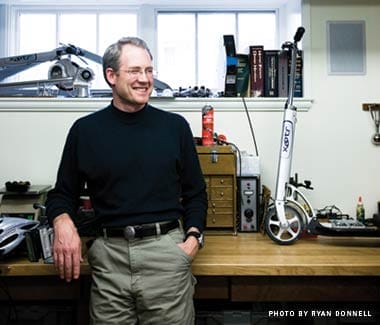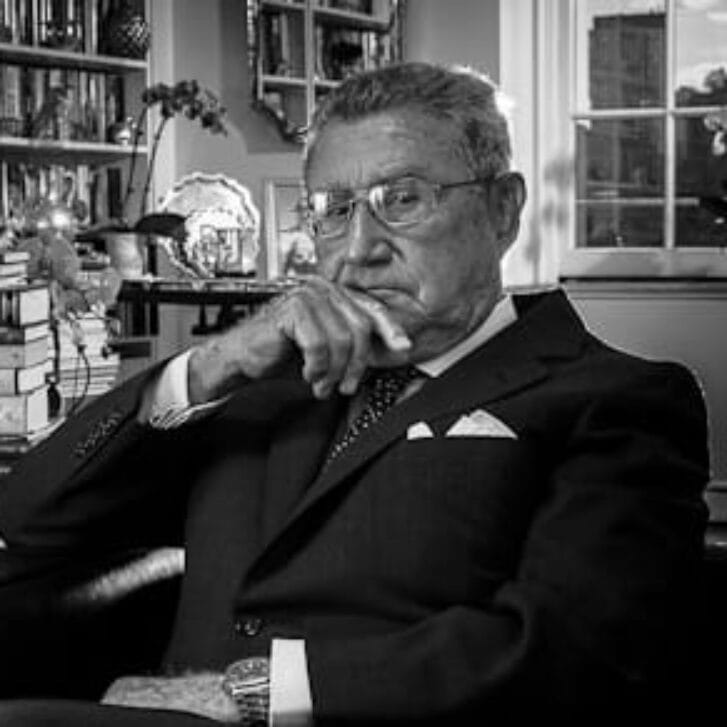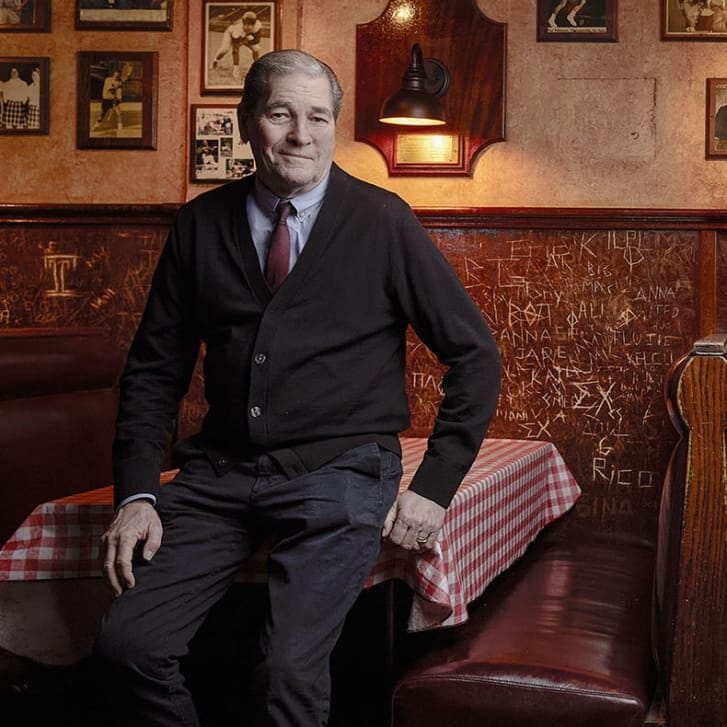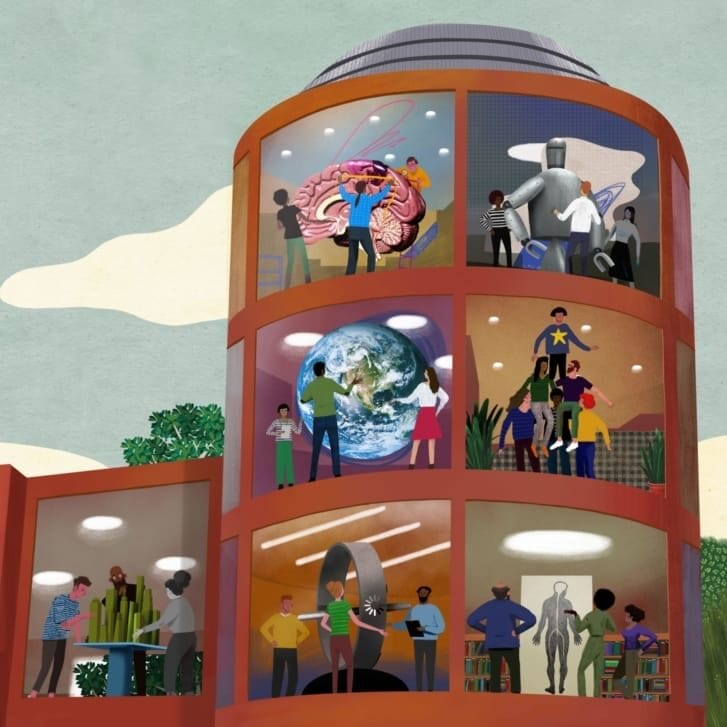Wharton Professor Karl Ulrich teaches innovation, which doesn’t seem like something that can be taught — until you see some of the inventions his product design students offer at their end-of-term design fair. It’s then you realize he must be doing something right.
On an afternoon in early May, Jon M. Huntsman Hall was buzzing as teams of Ulrich’s students hawked their products and would-be consumers assessed the items’ desirability. There were Jungle Hooks, a system of S-shaped links meant for hanging items while preserving precious dormitory space; Ironus Prime, the ironing board that folds into a pillow case; and Sticky Sudoku, Post-It Note sized puzzles for the sneaky student who wants to play number games without getting caught.
Amanda Dyson, E’09, demonstrated The Cordanizer, a series of cups that helps tidy the mess made by multiple electrical wires. (It later won the “market share” portion of the fair.) Ulrich’s product design course is difficult to get into, she said, and she’s glad she made the cut.
“This is probably my favorite class I’ve had at Penn. After taking this class, I know this is what I want to do,” Dyson said. “(Ulrich) taught us how to look for needs. You trust him because he’s obviously succeeded and he knows what he’s talking about.”
Ulrich’s title at Wharton is CIBC Professor and Chair of the Operations and Information Management Department. His research focuses on innovation, design, and product development, and he’s partnered with companies like Merck, Dell, and Hewlett-Packard. He’s also faculty director of the Weiss Tech House, a campus organization that supports students in the development of new technologies and sponsors the annual PennVention competition.
But the reason he can teach something that seems unteachable is because he’s the real deal: an inventor, an entrepreneur, an in-demand consultant for companies working in the fields of medicine, food, transportation, and technology. He’s the driving force behind products as diverse as chewy fruit snacks and a state-of-the-art scooter.
He knows innovation and product design because he lives it: His Narberth home is a former 19th century stone church converted into living space perfect for Ulrich, his wife, Penn English professor Nancy Bentley, and sons Jamie, 14, and Nathan, 10. He makes his nearly 10-mile ride to Wharton on a Swift bike, a folding bike he’s helped refine, that’s equipped with a Crossrack, a bike storage system that’s also his latest product. He has about 20 patents to his name — and he’s only 47.
So just how does he teach “innovation”?
“I mostly teach with projects,” he says. “On the one hand, you have to teach by doing. On the other, there’s some theory to be taught but it’s too dry to do it in the abstract.”
At the start of his product design class, every student came up with a product opportunity. Those were then narrowed down via something Ulrich calls, “tournament-style decision making.”
“It’s ‘American Idol’ meets ‘Survivor,’ ” he says. “You determinedly filter the ideas until only the best survive.”
Being creative isn’t a requirement for success, he says. He puts an emphasis on hard work, sometimes quoting Edison, “Genius is one percent inspiration and 99 percent perspiration.”
“A good idea is better than a bad idea, but execution matters,” he says. “You are looking for both good ideas and a team that will take it forward.”
Taking it forward is the hard part. Even among very entrepreneurially minded Wharton students, only about five percent actually attempt to take their products out of the classroom and into the real world, Ulrich says.
Undergraduates usually take Ulrich’s course during their junior or senior year. For some, like systems engineering major Thomas Macrina, it’s their first chance to be “hands-on.” The subject matter — and the professor — are gripping, he said: Of two other three-hour classes he had last semester, Macrina says he “walked out after five minutes.” Not Ulrich’s. “Honestly, he’ll keep my interest, three hours straight.
“You need innovation. Creativity is giving yourself a different perspective on everything you do, be it how you get up in the morning, how you eat your cereal, or how you solve the housing crisis,” Macrina said. “He gives you full range, within a box, and you realize what you’re capable of.”
It’s also an eye-opener, he said. After a class on how products are made, he walked around the rest of the day looking at everyday items and thinking, “That door is sawed out. That knob was molded.”
Ulrich notes that at Penn and Wharton, the culture is often focused towards finance. “If we’re really going to understand how technology develops, we need more than economics,” he says. “The product design course opens up new possibilities for students.”
“The Triumph of Refinement Over a Brilliant Idea… ”
Ulrich jokes that he’s an engineer who is teaching at a business school. He holds bachelor’s, master’s, and doctoral degrees in mechanical engineering from MIT. When it was time for him to step out into the working world, he interviewed at some top engineering schools and subsequently got some top offers.
But a friend suggested he interview at Harvard Business School and he did, giving a presentation on “Computation and Pre-Parametric Design,” his doctoral thesis, something that even he says has little to do with business. Harvard wanted him to come aboard. That provoked the interest of MIT’s Sloan School of Management, which was starting a program that married its business and engineering schools. MIT interviewed Ulrich and also offered him a job in 1988.
Despite his wife’s frank assessment that “Come on. You know nothing about business,” he decided to give teaching at a business school a try. He chose MIT, he said, because he thought that if he joined the staff at Harvard, there would be no return; he’d be a business professor for life, like it or not. He need not have worried, he says now.
“I look back, it’s been 20 years, and I think, ‘I guess I really am a business professor,’” Ulrich says.
Ulrich grew up in New Hampshire, one of five children. His mother, then a stay-at-home mom, later went back to school and became a professor of history. His father, a chemical engineer who taught at the University of New Hampshire, enjoyed home improvement projects.
“We always lived in a house that was unfinished,” Ulrich says. “I learned to solder copper plumbing when I was 12 years old. All of that made me very unafraid of how something works. I was not afraid to learn.”
Ulrich built the standard kid stuff — go-carts, tree houses, zip guns. He also created a huge slingshot out of surgical tubing tied to two trees, which he used to launch things into the woods near his home. (One advantage of being one of five children is his mother was often busy.)
One early lesson? That everything, from the ice cube tray to the ultrasonic scalpel, is simply an engineered device. “Once you have that epiphany,” Ulrich says, “nothing is complicated anymore.”
As a sophomore at MIT, Ulrich took part in the “270 Contest,” a mechanical engineering competition that he compares to “the homecoming football game. It’s a very big deal.” Given a bunch of parts, each competitor had to build something that, when put on a seesaw with a rival’s creation, would cause the seesaw to be tilted down at the end of 30 seconds. Ulrich built a tractor that won nine contests in a row, taking the title.
“I built it early and then refined it. The triumph of refinement over a brilliant idea,” he says. “I remember thinking, ‘I’m pretty good at this. I can make this work.’ ”
Bringing his Ideas to Market
In 1999, after more than a decade of teaching — five years at MIT and six at Wharton — Ulrich decided he wanted to try something different.
“I got to the point where I said, ‘I teach innovation and entrepreneurship and I’ve never started a company. I wanted the experience,” he says.
So partnering with the industrial design consultancy Lunar Design, Ulrich generated 200 business concepts and using the tournament method, worked to narrow it down to one they would produce. (Their ideas were all over the map. One was a digital picture frame, a cutting-edge concept in 1999.) They finally decided their best bet was a high-performance scooter for adults. After much designing — “If the deck is even a centimeter too high, you feel it,” Ulrich says — the result was the Xootr, which was launched in September 1999 and has now sold close to 100,000 units, even enjoying a recent resurgence due to increased gasoline prices.
Personal transportation is a design field that appeals to Ulrich. That’s why, when he saw a clever bicycle design at a folding bike conference a few years later, he asked the inventor to go into business with Xootr, with Xootr producing and refining the bike, and giving the inventor royalties. Several thousand Swift bikes have since been sold, at a price of about $700, largely directly to consumers via the Xootr website.
“It was weird for me, making someone else’s product, but I’d do it again,” Ulrich says. Ulrich rides his Swift bike to work. But when he travels to Vermont, where he’s building a cabin, he drives his Ford F150 to haul his gear. All that gas guzzling got him thinking. The result, with the help of his MBA students, was TerraPass.
“I burn a lot of fuel, but I’m willing to pay for my sins,” he says. “I’m very much a need-driven innovator.”
TerraPass sells so-called “carbon offsets.” It works like this: Customers determine how much carbon dioxide their activities — like driving and flying — generate, then pay TerraPass money to counterbalance the environmental damage they’ve caused. TerraPass, a for-profit company, invests in things like wind power, landfill gas reclamation, and biomass energy production.
The New York Times dubbed TerraPass one of 2005’s most noteworthy ideas. Today, the company is not alone in its field — Ulrich guesses there are at least 50 competitors — but it has excelled by packaging its product and marketing it. “I look around and I think we’ve had an impact,” Ulrich says.
At home, Ulrich spends much of his time in his lower-level workshop, separated from the family’s rec room by glass patio- style doors that allow him to see his sons playing “Guitar Hero” or watching television. He has a desk with books and computers along one wall and a workshop — complete with tools — along the other, the space between the two only a roll away if you’re sitting on his rolling desk chair.
“I like the idea of being directly connected to the stuff,” he says. “Some days I’ll pretty much move effortlessly from one to another.”
On one wall, Ulrich has a collection of ice cream scoops, from the early days of the pointy scoop to the trigger-style server in different styles. He enjoys studying the evolution of a product, he says. He also enjoys product design, as evidenced by a line of 15 different Coca-Cola cans on a nearby shelf, left over from an analysis he did for a new book he’s writing about design.
Food is another creative area for Ulrich. As a graduate student, he designed an industrial clam shucking machine that was later developed commercially. He’s also one of the inventors of Betty Crocker’s Fruit Gushers, chewy, fruit-flavored bits that have a sweet liquid filing.
Ulrich has worked on the production of everything from sausages to breakfast goods. (Ever wonder how they make that cinnamon bun shaped cereal? He knows.) He has created French fries that get crispy in the microwave, no fancy packaging required. (He says it has something to do with the cut of the potatoes, but won’t reveal more in case the idea takes off.)
“With most food products, it’s not hard to conceive a product itself. The hard part is how to make it,” Ulrich says.
Indeed, in 1990, Ulrich joined a team developing a self-serve ice cream machine that would offer different flavors. The resulting product, sold under the name MooBella, is finally finished. “Twenty years later, it’s ready for the market,” he says.
One percent inspiration, 99 percent perspiration. Ulrich practices what he teaches.
Natalie Pompilio is a former Philadelphia Inquirer reporter. She is a frequent contributor to the Wharton Alumni Magazine.


























